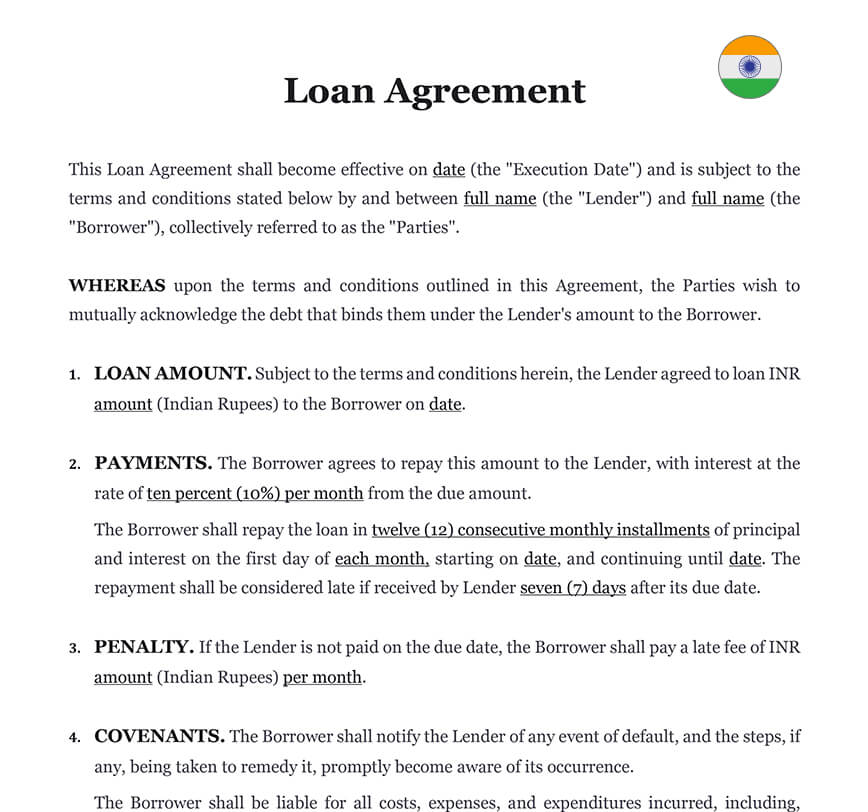
Download this Loan Agreement to protect the lender, as it legally requires the loan to be repaid in regular installments.

Word Document (.docx)

Ready to use legal template
Drafted by experienced lawyers
Compliant with Indian law
Ready to use legal template
Drafted by lawyers
Compliant with Indian law
Individual Loan Agreements are legal documents that certify to the borrowing between persons. It describes the nature of the loan for tax reasons and prevents it from being deemed a gift. A loan arrangement in India must fulfil several standards in order to be legally legitimate. As a result, an Indian Loan Agreement form is required. It enables you to formalise the loan and preserve a written record of it. If one of the borrowers is unable to repay the loan or disputes the loan arrangement between persons, the cash in issue can be recovered. Get your personalized personal or business loan agreement from Themis Partner to justify your loan, claim your funds, and establish the terms of repayment. Our lending agreement was written by Indian lawyers and is based on Indian law.
A Loan Agreement, also known as a term loan, demand loan, or loan contract, is a legal document that details a financial agreement between two parties, one of which is the lender and the other the borrower.
This contract outlines the loan amount, any interest rates, the repayment schedule, and payment dates. A written contract provides both the borrower and the lender with a clear overview of the loan’s conditions.
A secured loan is one that is provided and backed by collateral to be utilised if the borrower is unable to make payments. Collateral is often a tangible item that may be seized and/or sold by the lender to pay off the loan’s outstanding balance. A vehicle, a house, stocks, or bonds can all be used as collateral.If the contract does not include a collateral provision, the lender will have to go to court to confiscate any of the borrower’s assets. The lender may still have to go to court to take the collateral with a provision in place, but the procedure is usually faster.
An unsecured loan is one that is made without the use of collateral. When lending money to friends or family members, these types of loans are more usual. Unsecured loans may have higher interest rates to compensate the lender for the risks of lending money without collateral.
Banks must follow the Reserve Bank of India’s instructions on charging interest rates.
ℹ️ Loan Agreement Applicable Laws: This agreement is governed by the general principles of the Contract Act of 1872. The Companies Act of 2013 governs the provision of loans, guarantees, or security by corporations to their directors (whether directly or indirectly).